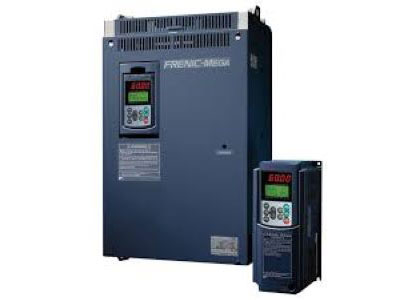Key Takeaway
VFDs are ideal for applications with variable torque loads, where motors don’t need to operate at full capacity constantly. They allow for precise control of motor speed, optimizing energy usage and reducing operational costs. By adjusting motor speed to match demand, VFDs also extend motor lifespan by minimizing wear and tear. This versatility makes them perfect for scenarios like HVAC systems, pumps, and conveyors, where fluctuating operational requirements are common. Overall, using VFDs enhances efficiency, lowers energy consumption, and prolongs equipment longevity, making them a smart choice for industries aiming to improve performance while minimizing environmental impact.
Situations Requiring VFD Implementation
VFDs are essential in situations where speed control of motors is necessary. One common scenario is when dealing with variable load conditions. For instance, in HVAC systems, where the load changes frequently, VFDs adjust the motor speed to match the load, ensuring energy efficiency. Another situation is in conveyor systems, where different speeds are required for different operations. By using VFDs, you can smoothly transition between speeds, reducing wear and tear on the machinery. Additionally, VFDs are vital in applications requiring precise control, such as in extrusion processes or material handling systems, where maintaining consistent speed and torque is critical for product quality.

Industry-Specific Applications of VFDs
Understanding the industry-specific applications of Variable Frequency Drives (VFDs) is essential for new engineers. In manufacturing, VFDs are crucial for assembly lines and packaging systems. They provide the flexibility to adjust production rates, ensuring efficiency and adaptability to varying demands. In the water treatment industry, VFDs play a key role by regulating pump speeds. This control ensures optimal water flow and pressure, which is vital for both water distribution and wastewater treatment processes.
In the mining industry, VFDs are used to control the speed of drilling and excavation equipment. This speed control enhances safety and operational efficiency, crucial in such demanding environments. Each application highlights the versatility of VFDs in improving performance and ensuring smooth industrial operations. Understanding these uses helps engineers select and implement VFDs effectively, optimizing their industrial processes for better outcomes.
You May Like to Read
Benefits of Timely VFD Usage
Implementing Variable Frequency Drives (VFDs) at the right time brings multiple advantages to industrial operations. Firstly, VFDs lead to significant energy savings. By adjusting motor speed to match the actual load, they reduce energy consumption, resulting in lower utility bills. This efficiency is particularly beneficial in industries where motors run continuously.
Moreover, VFDs extend motor lifespan by reducing mechanical stress during startup and operation. This leads to lower maintenance costs and less downtime, as motors experience less wear and tear.
Additionally, VFDs enhance process control. They allow precise adjustments to speed and torque, improving product quality and consistency. This level of control is crucial in applications requiring exact performance parameters.
Cost-Benefit Analysis of Using VFDs
When considering the adoption of Variable Frequency Drives (VFDs), conducting a comprehensive cost-benefit analysis is crucial. While the initial investment in VFDs can be substantial, the long-term advantages often outweigh the upfront costs. One significant benefit is the substantial energy savings achievable through VFDs, which can result in a rapid return on investment, sometimes within just a year of implementation. Moreover, VFDs contribute to lower maintenance expenses and extend the lifespan of equipment, enhancing their cost-effectiveness over time.
It’s also essential to factor in potential productivity gains and improvements in product quality facilitated by VFDs, which can significantly impact overall profitability. By carefully evaluating these factors, businesses can make informed decisions about integrating VFDs into their operations. This analysis not only considers financial aspects but also emphasizes the operational benefits that VFDs bring, making them a valuable investment in industrial settings globally.
Best Practices for VFD Usage
To achieve optimal performance and longevity from Variable Frequency Drives (VFDs), adhering to best practices is crucial. Proper installation is the first step, requiring the expertise of qualified professionals to ensure secure electrical connections and compliance with safety standards. This initial setup sets the foundation for reliable operation.
Regular maintenance plays a pivotal role in VFD upkeep. This includes routine tasks like cleaning filters to maintain airflow, inspecting connections for any signs of wear or overheating, and updating firmware to incorporate the latest improvements and bug fixes. These preventive measures not only enhance efficiency but also mitigate the risk of unexpected downtime.
Equally important is operator training. Educating personnel on the correct usage of VFDs empowers them to adjust settings effectively, troubleshoot common issues independently, and respond promptly to operational changes or alarms. This proactive approach not only optimizes performance but also ensures safety and prolongs the lifespan of VFDs.
Conclusion
Identifying the optimal use cases for VFDs involves understanding the specific requirements of your industrial applications. By recognizing situations where variable speed control is beneficial, you can implement VFDs to enhance energy efficiency, improve process control, and reduce maintenance costs. Whether in manufacturing, water treatment, mining, or other industries, VFDs offer versatile solutions that can significantly improve operational performance. By conducting a thorough cost-benefit analysis and following best practices for installation and maintenance, you can ensure that your VFDs deliver maximum value and contribute to the overall success of your operations.
